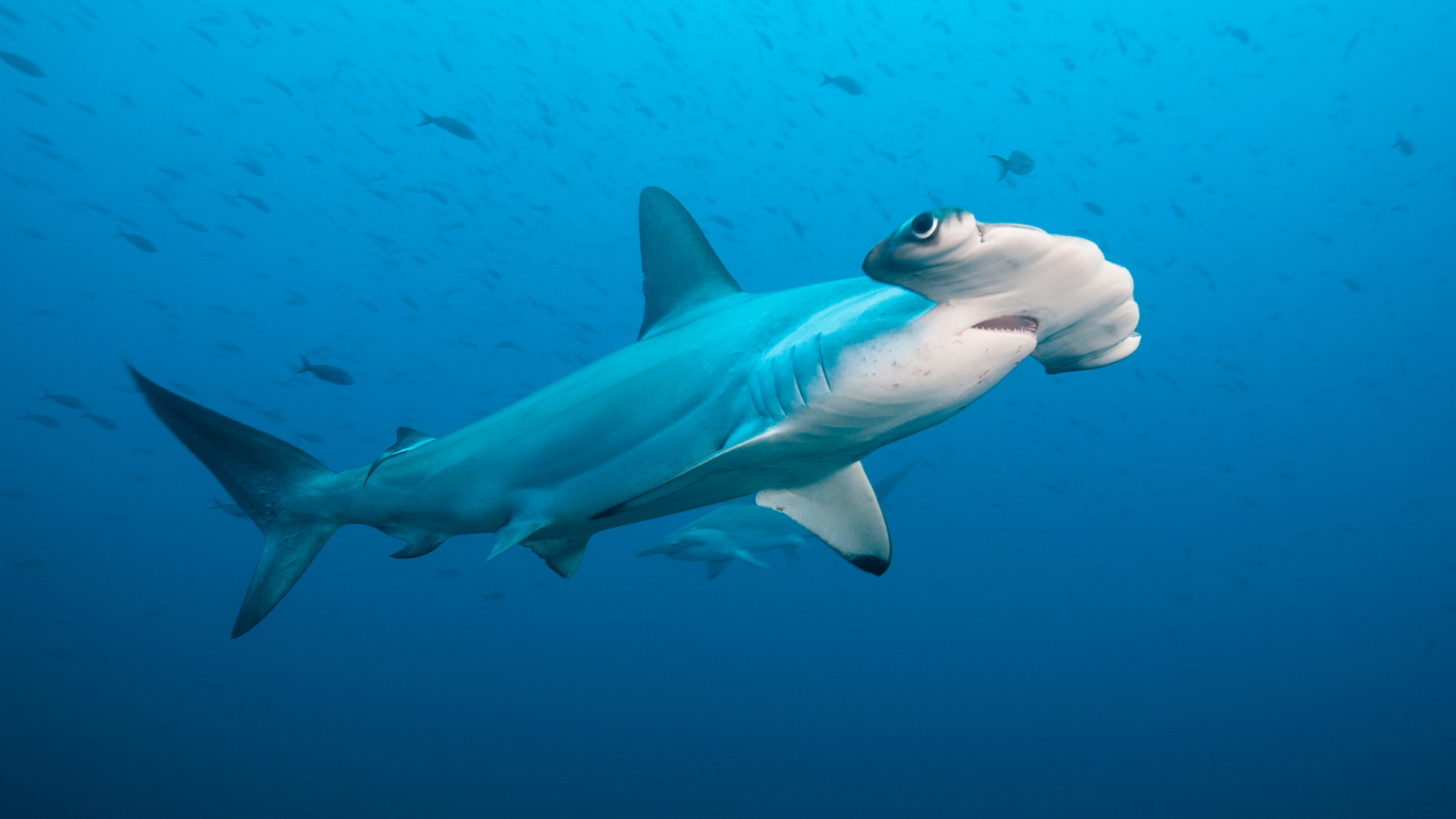Hammerhead sharks are vanishing from their mountain homes in the Gulf of California, divers say
Scalloped hammerhead sharks used to seek refuge at two Mexican seamounts, but it appears fishing has killed them off.
Hammerhead sharks have seemingly disappeared from two underwater mountains in the southwestern Gulf of California, and fishing is likely to blame, a new study has found.
Researchers looked at observations from divers over the last 50 years and found that scalloped hammerhead sharks (Sphyrna lewini) experienced a 97% decline at the El Bajo seamount and a 100% decline at the Las Animas seamount — both off the coast of Mexico — between the 1970s and 2010s.
Study lead author Kathryn Ayres told Live Science in an email that she was "saddened but not surprised" by the results.
Ayres investigated the sharks' decline as part of an internship with nongovernmental organization (NGO) Pelagios Kakunjá and is now a research scientist at a separate NGO called Beneath The Waves. The study will appear in the January 2024 issue of the journal Marine Policy but has been available online since Nov. 22.
Scalloped hammerhead sharks are a critically endangered species threatened by fishing, according to the IUCN Red List of Threatened Species. The sharks are targeted for their large fins, which are used in shark fin soup, the authors noted. Researchers don't know how many of these sharks are left globally.
"Scalloped hammerhead sharks, and most shark species in general, are vulnerable to extinction as they produce few offspring, have long gestation periods and are slow growing," Ayres said.
The El Bajo and Las Animas seamounts were once hotspots for large schools of hammerhead sharks — one survey carried out in the late 1970s and 1980s recorded 225 hammerhead sharks at El Bajo, according to the study. Ayres said the sharks use seamounts as a refuge during the day, where strong currents force oxygenated water over their gills so they don't have to use energy swimming around.
Get the world’s most fascinating discoveries delivered straight to your inbox.

To learn more about hammerhead shark decline at the seamounts, the authors sent a questionnaire to divers between 2017 and 2020. All of the people who participated — 50 for El Bajo and 32 for Las Animas — were either diving guides, experienced recreational divers, researchers or photographers. However, their responses were still based on memories from up to 50 years ago.
Ayres said she believes human memories are reliable enough for studies like this with such a charismatic species. "When a scuba diver encounters a large school of hundreds of hammerhead sharks, it's not something you forget, and a school of over one hundred compared to a school of less than ten is very noticeable," Ayres said.
The authors acknowledge that relying on people's memories is a limitation of the study — and only some of the participants had observed the seamounts in the 1970s, the team wrote.
Divers reported seeing an average of 150 sharks at El Bajo and 100 sharks at Las Animas per dive in the 1970s, but only five sharks at El Bajo and zero sharks at Las Animas per dive in the 2010s. According to the study, participants put the decline in shark numbers at the two seamounts down to overfishing, fisheries management, changes to prey abundance, habitat degradation and climate change.
Ayres noted that some of the study participants believed the decline was due to increasing noise from boats and bubbles from scuba divers, but she thinks the decline is primarily down to fishing and called for better protection of the seamounts.
"In other areas that are protected from fishing such as The Revillagigedo Archipelago, also in Mexico, divers encounter very large schools," Ayres said. "Although they might not hang around the divers for a long time, they are still evidently present."
Editor's note: Ayres' affiliation has been updated.

Patrick Pester is the trending news writer at Live Science. His work has appeared on other science websites, such as BBC Science Focus and Scientific American. Patrick retrained as a journalist after spending his early career working in zoos and wildlife conservation. He was awarded the Master's Excellence Scholarship to study at Cardiff University where he completed a master's degree in international journalism. He also has a second master's degree in biodiversity, evolution and conservation in action from Middlesex University London. When he isn't writing news, Patrick investigates the sale of human remains.



